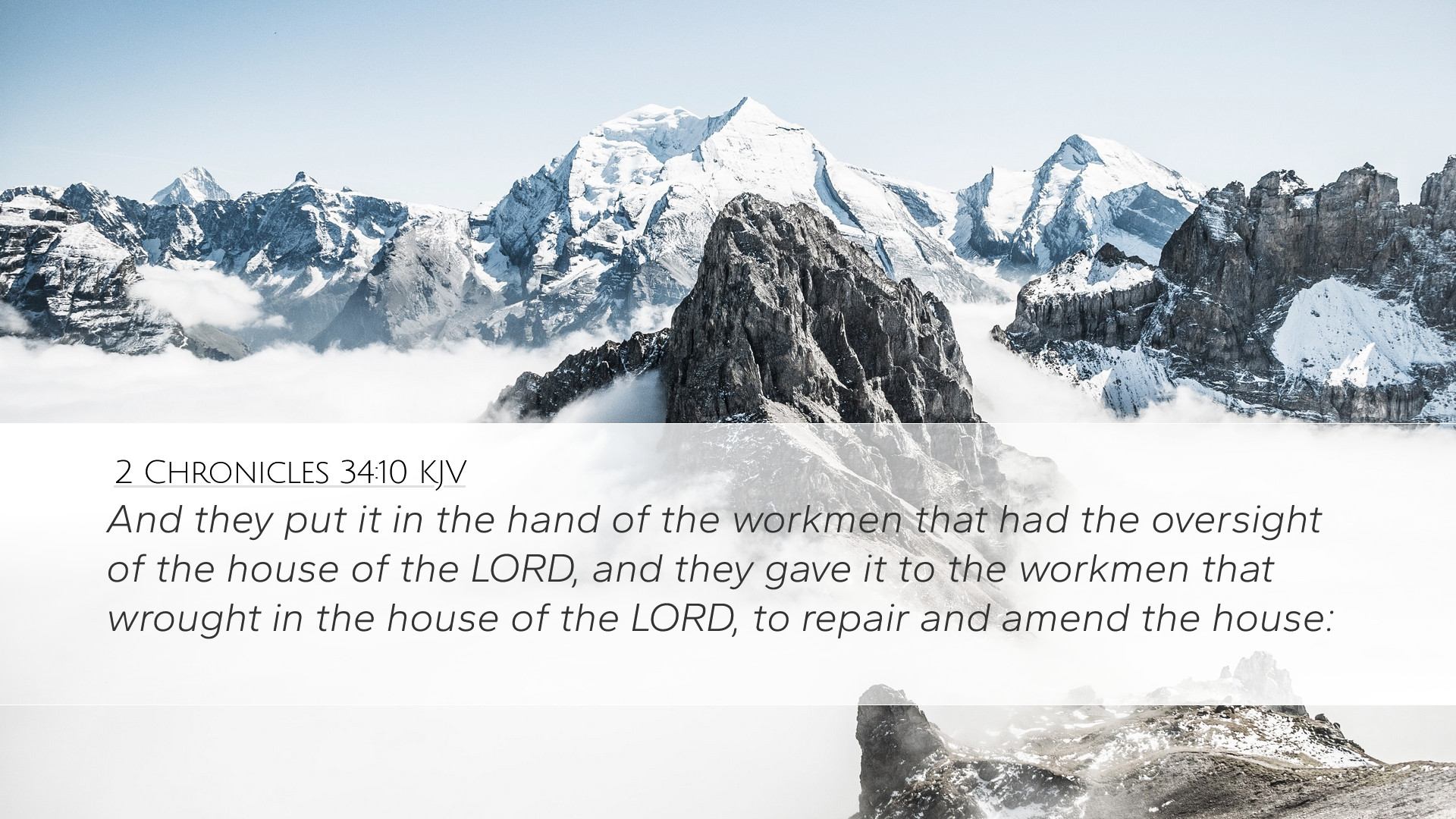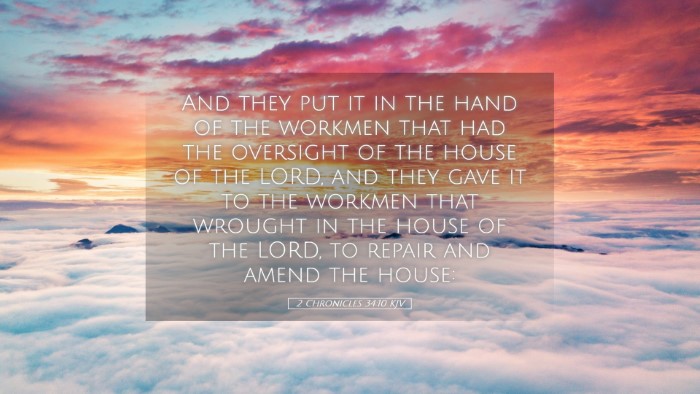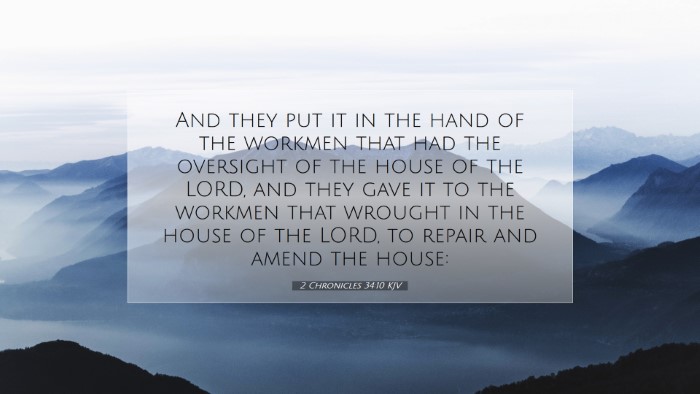Commentary on 2 Chronicles 34:10
Verse Context: 2 Chronicles 34 narrates the reign of King Josiah of Judah, a pivotal figure in Israel's history. His reign is marked by significant religious reforms and a return to the worship of Yahweh. The verse in focus, 2 Chronicles 34:10, highlights the fiscal responsibility undertaken by Josiah as he organizes the repair of the temple. This context is essential for understanding the implications of his actions in the broader narrative of Judah's spiritual renewal.
Summary and Insights
In 2 Chronicles 34:10, we find the following text: “And they put it in the hands of the workmen that had the oversight of the house of the LORD, and they gave it to the workmen that wrought in the house of the LORD, to repair and amend the breaches of the house.” This verse serves as a critical juncture for both theological reflection and practical application in the lives of believers, especially concerning stewardship and restoration.
Theological Themes
-
Stewardship:
This verse emphasizes the importance of proper financial stewardship in God’s house. Using the resources wisely to restore the temple indicates a precept about honoring God with our material possessions.
-
Restoration:
The act of repairing the house of the Lord symbolizes the restoration of faith and the desire for a right relationship with God. It reminds us of the continual need for renewal in our worship practices and communal life.
-
Community Involvement:
Josiah’s initiative reflects a collective effort, as he collaborates with skilled workers from the community. This portrays the significance of community engagement in the life of the church and the necessity for collective responsibility in spiritual matters.
Commentary Insights
Matthew Henry: Henry emphasizes the profound act of repairing the temple, underscoring that it reflects a heart truly devoted to God. He comments on the significance of managing the resources entrusted by God, urging believers to ensure that their financial support assists in furthering God’s work through the church.
Albert Barnes: Barnes notes that Josiah's reforms were prompted by a desire to return to God's instructions as found in the Law of Moses. He highlights that the work done on the temple was a vital aspect of the nation’s revival. Barnes explores the implications of such a restoration, emphasizing that when we take the necessary actions to fix the “breaches” in our own lives and congregations, we are actively participating in God’s divine plan.
Adam Clarke: Clarke illustrates the importance of the physical structure of the temple, representing the presence of God among His people. He also notes that repair work in the temple symbolizes a spiritual awakening, urging believers to examine their own temples—their bodies and spirits—and how they might need repair to glorify God. Clarke encourages pastors and theologians to motivate their congregations to engage in such restorative acts.
Practical Application
-
For Pastors:
Pastors are called to lead initiatives that promote restoration within their congregational culture. This can include reviewing how church resources are allocated and ensuring that programs and buildings reflect a commitment to worship and community.
-
For Students and Scholars:
This verse provides an excellent case study in church history. It prompts deeper theological inquiry into how stewardship of finances has evolved in church practices and what implications it has for contemporary ministry.
-
For Theologians:
The restoration described in this passage can be connected to broader theological concepts such as redemption, the significance of worship spaces, and God’s ongoing work in His people. The study invites theologians to reflect on how contemporary church designs can facilitate deeper worship experiences.
Conclusion
In conclusion, 2 Chronicles 34:10 serves as a powerful reminder of our responsibility to God’s house and the community of faith. The insights gleaned from public domain commentaries highlight various facets of stewardship, restoration, and community involvement, urging both leaders and followers to take action. This verse not only reflects Josiah’s commitment but also invites believers to reflect on their own commitments to restoring and maintaining the sanctity of worship in their lives and congregations.


